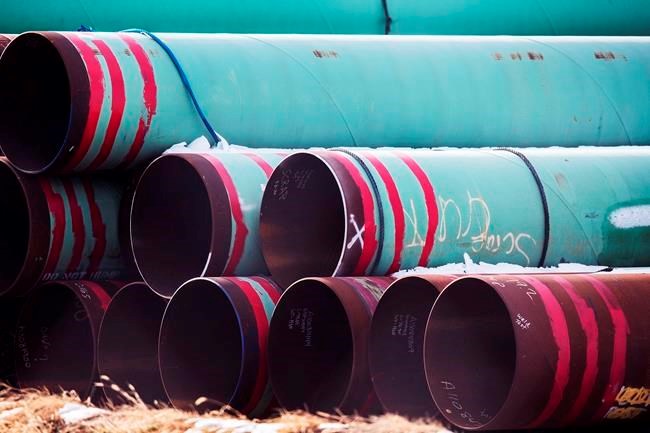One potential impact of Joe Biden’s presidency: more oil tankers off Victoria.
You won’t see him having to fight his way through a phalanx of protesters waving inflatable whales, though, not like Justin Trudeau in James Bay.
When Biden, on his first day in office, put the brakes to the Keystone XL pipeline project in the U.S., the immediate result was more pressure on Ottawa to complete the twinning of the Trans Mountain route through Alberta and B.C.
If all goes to schedule, that means we’ll see more tankers — as many as 34 a month, up from the historical average of four or five — glide past the Victoria waterfront beginning at the end of 2022.
The Canadian government pushed both Keystone XL and Trans Mountain for the same reason: They would make it easier to ship Alberta oil to offshore markets, principally in Asia. Keystone would do so via the U.S. Gulf Coast and Trans Mountain through an expanded terminal in Burnaby.
Now, with Biden killing the American leg of Keystone for environmental reasons, the spotlight is on the plan to twin the existing Trans Mountain line, tripling its capacity.
Trudeau’s government deems the expansion so essential to the economy that it bought the project from Texas-based Kinder Morgan in August 2018 and fought off a series of legal and political challenges, including those from B.C.’s NDP government. Some of the opposition is rooted in concern over climate change and some in Indigenous rights, but some, particularly here on the saltchuck, has to do with the prospect of a tanker cracking up and doing an Exxon Valdez on our shores.
Protests continue and work has been slowed by COVID, but Trans Mountain construction is now about one-fifth complete. The company says 2021 will see peak construction, with thousands of workers at hundreds of job sites across B.C. and Alberta. It expects two of the three new shipping berths being built at Burrard Inlet’s Westridge terminal to be in service in December 2022.
The extra Trans Mountain traffic would be added to the thousands of commercial vessels that pass through our waters each year. They include the oil tankers that Victorians already see in the distance, roughly one of them a day, carrying crude from Alaska, Russia and elsewhere to Washington state’s five Puget Sound refineries, four of which are within 60 kilometres of Greater Victoria.
Thursday, the oil tanker Alaskan Legend was moored at Ferndale, near Blaine, the Eco City of Angels was at Anacortes and the Andre Reboucas was anchored south of Bellingham.
To proponents, all that traffic proves how safe it is to ship Alberta’s oil from B.C.’s coast. Opponents, on the other hand, just see ever-worsening odds, with the coast assuming all the risk. Hence the boisterous protest that greeted Trudeau when he dropped into the Canadian Coast Guard station in James Bay in April 2018 to pitch his 10-year, $1.5-billion Ocean Protection Plan.
The prime minister argued then that the spill-response measures required as part of Trans Mountain’s approval would improve the safety of an already-existing oil-shipping industry. “The Trans Mountain Pipeline has been in place since the fifties and has been exporting diluted bitumen for three decades now,” he said. “This is not something new.”
Those safeguards include 43 new vessels and six new spill-response bases, including four on Vancouver Island, being added by the industry-funded Western Canada Marine Response Corp. Despite some delays that matched Trans Mountain’s journey through the courts, WCMRC — which already has bases elsewhere on the Island — says all its new assets should be in place by the fall of 2022.
That includes four bases that are expected to open in the last half of this year — one in Vancouver, another in Nanaimo, a Ucluelet-Port Alberni operation that will be treated as a single base covering the west coast of the Island, and a Saanich Peninsula base consisting of office and warehouse facilities on Victoria International Airport property, with a skimming vessel, landing craft and work boats moored at Sidney’s Van Isle Marina.
No completion date has been set for bases along the Fraser River and at Beecher Bay, the latter being home to a skimming vessel, a coastal response vessel, landing craft and work boats.



